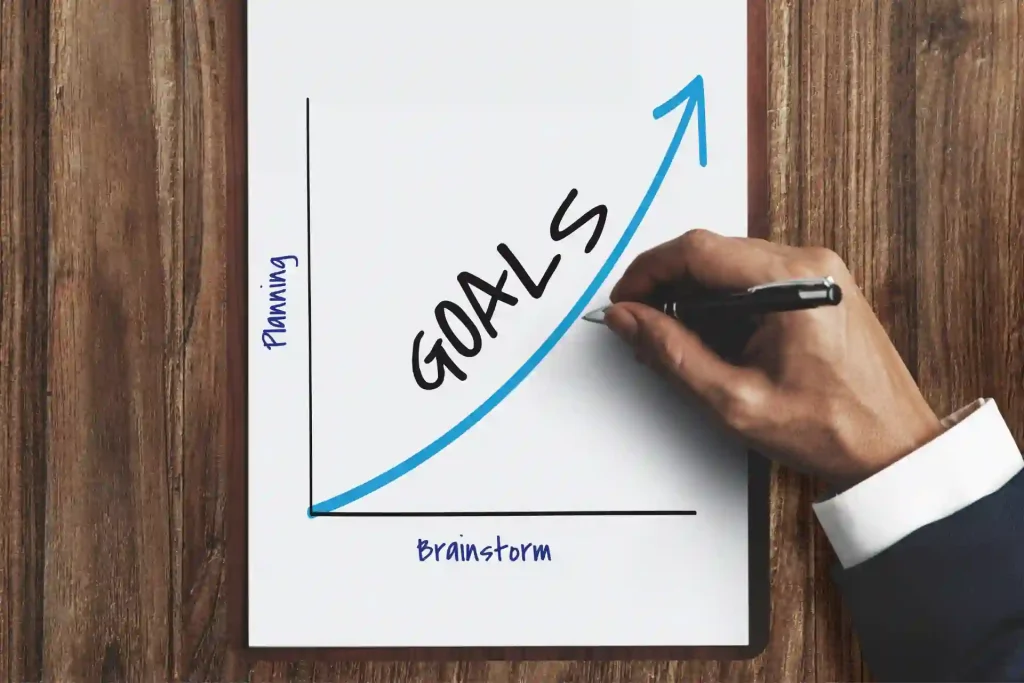What Is the Balanced Scorecard (BSC)?
The Balanced Scorecard here referred to is a revolutionized strategic management tool that assists in translating the vision and the mission of the business into achievable objectives. Popularized by Robert Kaplan and David Norton, it not only concerns itself with financial points of view but other important views such as customer perspective, operational perspective, and learning and growth. In this way,modelling business perspectives bcs such types of balancing assist organizations to develop a structural model to track its performance and improvement systematically..
Why Use BSC for Modelling Business Perspectives?
The conventional strategic frameworks are typically oriented primarily on financial variables. Although money is important, it only describes a company in part. The Balanced Scorecard allows an organisation to consider it in terms of four perspectives thus promoting coordination of strategic plans with everyday operations. When it comes to modelling business perspectives bcs the management of business, perspectives are always complex and diverse, but modelling a business with BSC allows for an effective, all-rounded and long-term strategy.
Fundamentals of Business Perspective Modelling
Key Business Perspectives in BSC
The key competitive advantage of BSC stems from the four key perspectives that are used to analyse business operations:
- Financial Perspective:
This centers on revenue generation, sales and control of expenses. It’s about answering questions like: Am I earning enough to meet my financial needs? Are we creating shareholder value?- Example: Gross profit margin and return on investment could be considered as the measures used by a retail chain.
- Customer Perspective:
The customers are the core strength of any organization. This viewpoint, measures customer satisfaction, loyalty and customer acquisition..- Example: Net promoter score and customer retention rates are the metrics that a tech company could use to determine how effective they are in the job well done towards their clients.
- Internal Business Processes Perspective:
This is because efficiency and innovation remains an important factor in the success of an operation. This kind of perspective looks at the work processes, standards and enhancement.- Example: A manufacturing firm’s operational objectives may include improving lead time or product quality.
- Learning and Growth Perspective:
Employees are the most valuable resources for each company. This perspective focuses on the development of talent as well as manager and employee engagement, and knowledge management.t.- Example: Many of the objectives reflect quantum measurements; for instance, a software firm could track the number of training hours performed by personnel or use satisfaction ratings.
The Role of Strategy in Perspective Modelling
This is because even the best integrated model cannot succeed with the right goals and objectives to achieve when they are not crafted out of a clear roadmap. Strategy underpins business perspective modeling since it provides the framework for evaluating whether each perspective contains the right metrics and activities to support long-term goals. For instance, if a business aims at creating a leadership in innovation, then its perspectives should focus on R&D, skills of its employees as well as customers.

Perspective Modelling
Overview of the Balanced Scorecard Framework
Financial Perspective
The financial perspective concerns itself with the financial outcome. These include total sales, gross and net income as well as operating and cash flows. But it is crucial to bear in mind that financial results may indicate the success (or non-success) of the initiatives in terms of other viewpoints.
Customer Perspective
It is centred on deciphering and building up the customer bonds. Tools like CSAT, RP loyal and market share are the most informative. It is therefore important for firms to develop good relationships with customers and to understand their requirements for the long run.
Internal Business Processes Perspective
It simply means that when internal processes of the organisation are audited, the weaknesses can be seen. Some of the measures are production ratio, defect rate, and product development time. Efficiency is a way to increase efficiency of work among workers and satisfaction of customers at the same time.
Learning and Growth Perspective
This dimension really lays emphasis on the need that would ensure there is a pool of well-trained, dedicated and productive workforce. Metrics like the turnover rate within the organisation, the rate of completion for training courses and leadership development programmes demonstrate an organisations’ development. A strong learning culture is one of the routes to becoming innovative and flexible.
Steps to Model Business Perspectives Using BSC
Define Strategic Objectives
Begin by asking: What are the goals that we are aiming at? Strategic goals and objectives have to be well understood, quantifiable, and consistent with the organisation’s mission statement. For example, an e-commerce disrupting technology startup would set goals in areas such as user satisfaction and technology deployment.

Align Perspectives with Business Goals
Each perspective should support broader organizational goals. For instance:
- An example of a financial performance objective might be the desire to raise profits – this could support customer-oriented initiatives.
- Such enhancements may, therefore, require certain internal processes to be fine-tuned for efficiency in order to achieve these enhancements.
Establish Key Performance Indicators (KPIs)
KPIs are the heart of all BSC models as they incorporate the organizational goals and provide the framework for scores assignment. Always, select measures that are clear or precise, achievable, and pertinent. For instance, monitoring of the employee performance under the Learning and Growth perspective aids in checking internal fitness with the strategic directions.
Tools and Techniques for Implementing BSC
Strategic Mapping
The tactical goals are mapped on the strategic maps through links between the objectives of all four views. These maps depict how initiatives interact by offering a x-ray view.
- Example: A company with a strategic direction of customer satisfaction may map this objective with Learning and Growth where employees are well trained while Internal Processes where support processes are made effective.
Data Visualization Tools
Tools such as Tableau, Power BI or Microsoft excel can be used to track them in real time by organizations. Visualization helps in easier interpretation of data by preparing a clear picture to be expected in the future.
Collaborative Software
Tools such as Monday.com or Slack check on the progress the team is making towards achieving Balanced Scorecard goals. In my opinion, the process of collaboration improves workers’ performance and informative efficiency of the project, ensuring that all involved participants know what to do.
Applications of the Balanced Scorecard in Perspective Modelling
Performance Management
Common with many performance measurement techniques, on this front, the Balanced Scorecard sets objectives and benchmarks to guide its teams and checks on them frequently. It is a performance map that organizations of any sort or status may follow..
Strategic Planning
BSC makes strategy implementation easier to undertake since it aligns the strategy into operational outcomes. Knowledge workers as members of teams can experience well-organized working with initiatives, resources, and scores. Such a plan can be compared to compiling all the instructions to get to a particular place.
Decision-Making
It is the necessary precondition for leaders who need to make conscious decisions based on facts. BSC helps guarantee that appropriate decisions are made to support strategic goals in order that unfruitful outcomes are not accomplished.
Benefits of BSC in Modelling Business Perspectives
Improved Alignment Across Departments
It has been found that when all people know how they fit into the overall picture, synergy exists. As we mentioned before, the Balanced Scorecard breaks down the barriers and encourages cooperation between the functions.
Enhanced Performance Monitoring
BSC measures a combination of performance indicators, which provide a full report of the health status of any organization. It’s a mobile marketing tool that allows the business owner to monitor the health of the business as if it were a person’s body.
Challenges in Adopting the Balanced Scorecard
Resistance to Change
It is always challenging to adopt a new framework since most teams like working within their comfort zone. This is a major barrier and the solution to it is good communication and leadership.
Overemphasis on Financial Metrics
This is the case with some organizations which get fixated with achieving financial goals without consider other viewpoints. The greatest advantage of the Balanced Scorecard can only be obtained with the right balance.
Case Study 1: Financial and Customer Perspectives
Company: TechCo Solutions (Healthcare Software)
Challenges:
- Lack of revenue growth.
- Declining customer satisfaction.
Solutions (BSC Implementation):
- Financial Perspective:
- Objectives: Increase profitability.
- Metrics: Revenue growth (15% YoY), profit margin (20%).
- Initiatives: Optimize pricing and reduce development costs by 10%.
- Customer Perspective:
- Objectives: Enhance satisfaction and retention.
- Metrics: Satisfaction score (90%), retention rate (85%).
- Initiatives: 24/7 customer support, personalized training, and regular client feedback.
Results:
- Revenue grew by 18%; profit margin reached 22%.
- Customer satisfaction improved to 92%, retention to 88%.
Case Study 2: Internal Processes and Learning Perspectives
Company: TechCo Solutions (Healthcare Software)
Challenges:
- Inefficient product development cycles.
- Low employee engagement and innovation.
Solutions (BSC Implementation):
- Internal Processes Perspective:
- Objectives: Improve efficiency and product quality.
- Metrics: Reduce development cycle to 8 months, 90% on-time delivery.
- Initiatives: Automate testing (DevOps) and use cross-functional teams.
- Learning and Growth Perspective:
- Objectives: Boost innovation and employee satisfaction.
- Metrics: Employee satisfaction (85%), new ideas implemented (10/quarter).
- Initiatives: Leadership programs, innovation labs, and rewards for top performers.
Results:
- Development cycles dropped to 9 months; bug-free releases reached 97%.
- Employee satisfaction increased to 87%; over 15 new ideas implemented.
Conclusion
The application of the Balanced Scorecard when modelling business perspectives is a revolution for organizations seeking to establish sustainable business success. Whereas BSC is an effective tool for performance management because it has financial, customer, internal, and learning balances, it recognizes strategy formulation. Regardless of the focused time horizon that is being employed- operational, tactical, or strategic, the BSC provides focus, alignment and flexibility.
FAQs
What is the main purpose of the Balanced Scorecard?
The BSC helps organizations translate their vision into actionable goals across financial and non-financial metrics.
How does BSC differ from other business modelling tools?
Unlike traditional models, BSC integrates customer, internal processes, and employee growth metrics alongside financial data, providing a more holistic view.
Is the Balanced Scorecard suitable for small businesses?
Yes, even small businesses can benefit from the BSC’s structured approach to aligning goals and tracking performance.
What are the common pitfalls in implementing BSC?
Failing to define clear objectives, neglecting non-financial metrics, and poor communication are common challenges in BSC implementation.
How often should the Balanced Scorecard be reviewed?
Quarterly reviews are recommended, but updates should occur whenever significant business changes take place. Regular reviews ensure relevance and accuracy.



